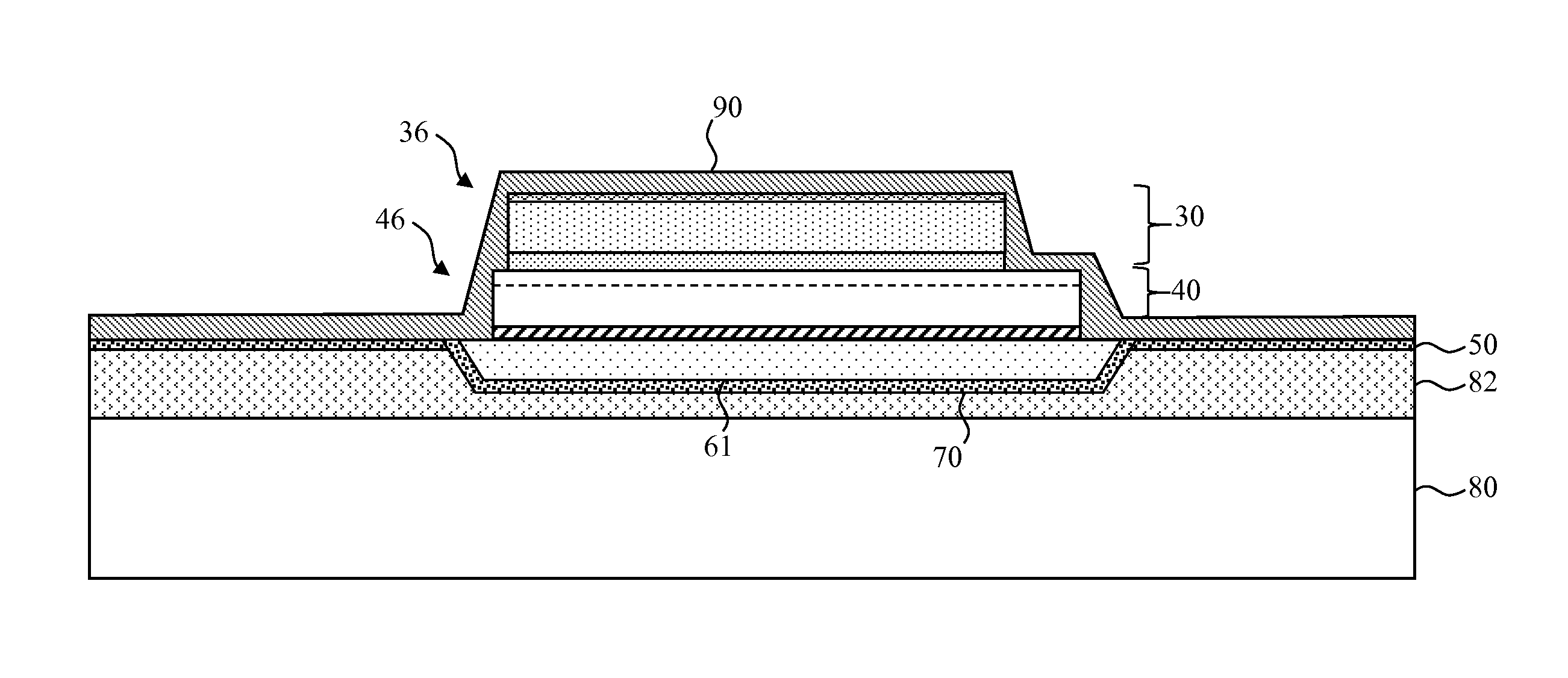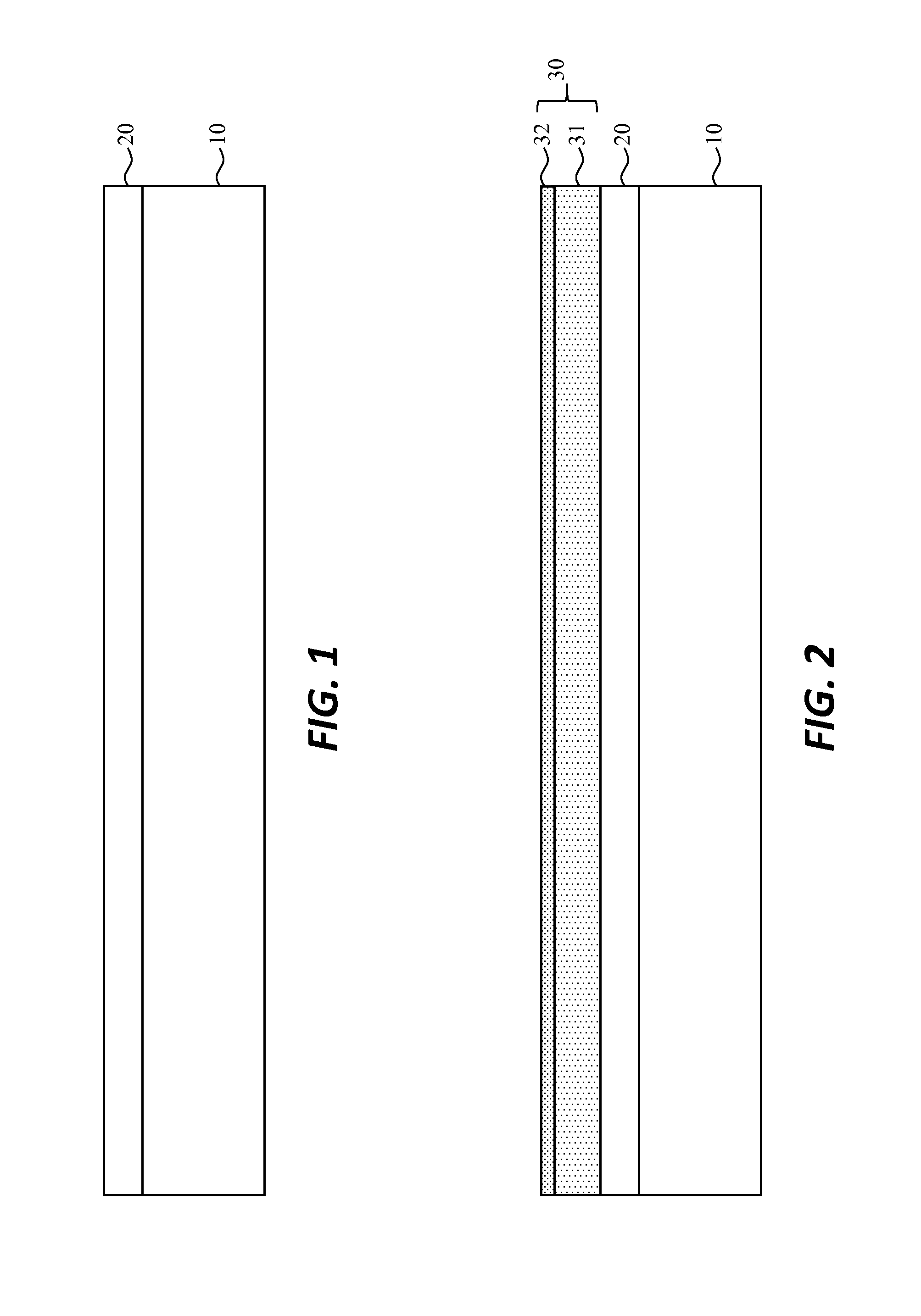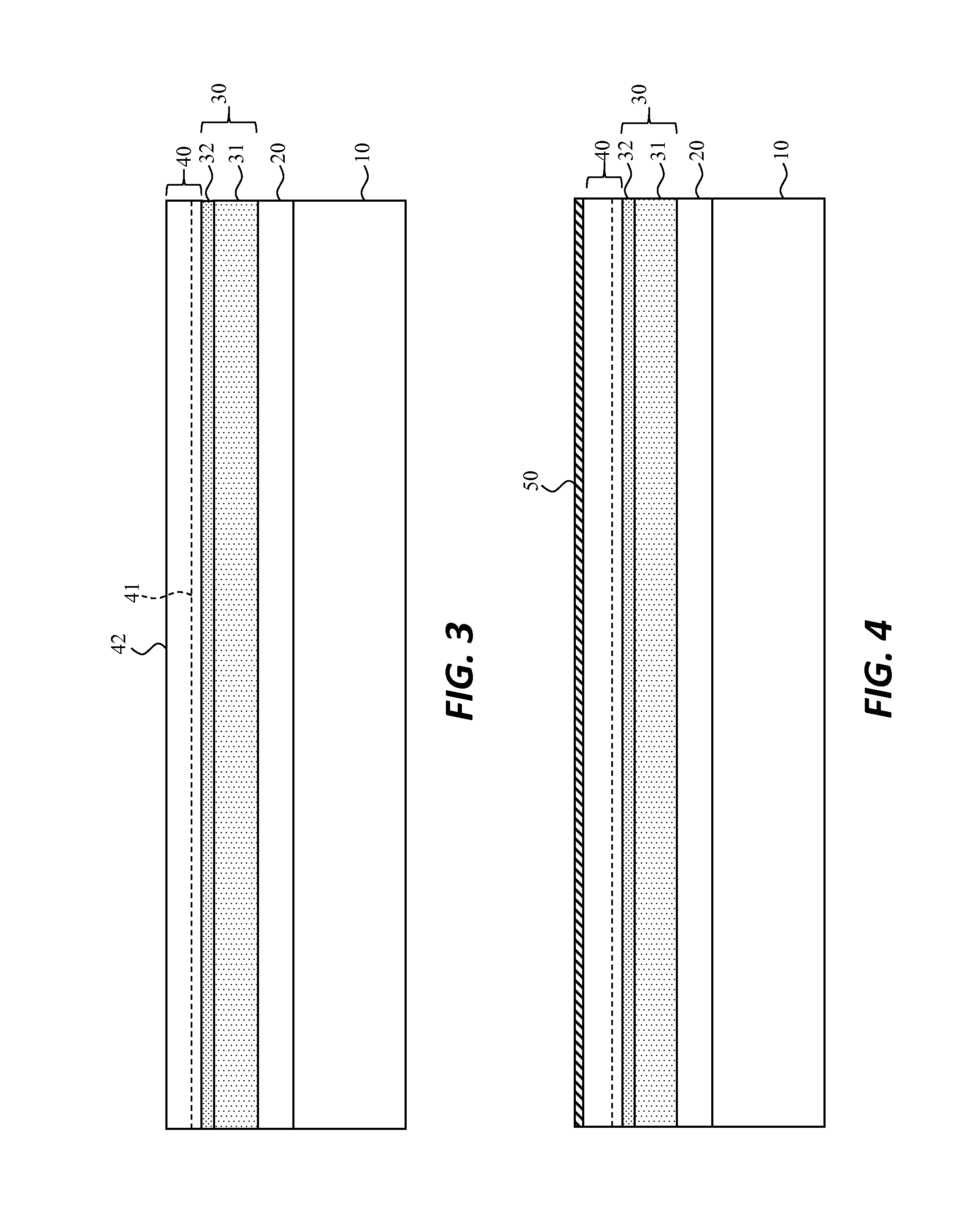Printable inorganic semiconductor method
a technology of inorganic semiconductors and semiconductors, which is applied in semiconductor/solid-state device manufacturing, electric devices, solid-state devices, etc., can solve the problems of reducing the performance and acceptability reducing the performance of the resulting led, and high cost of the display. achieve the effect of high performan
- Summary
- Abstract
- Description
- Claims
- Application Information
AI Technical Summary
Benefits of technology
Problems solved by technology
Method used
Image
Examples
Embodiment Construction
[0068]The present invention provides structures and methods that enable the construction on a substrate of micro-LED chiplets that can be micro-transfer printed. Such printed structures enable low-cost, high-performance arrays of electrically connected micro-LEDs useful, for example, in display systems. Various semiconductor elements may be formed using the methods and techniques described here, including diodes (e.g., micro-diodes), lasers (micro-lasers), and light-emitting diodes (e.g., micro-LEDs). In general, the steps of the present invention are performed using photolithographic methods known in the integrated circuit arts, for example using deposition methods including evaporation, sputtering, and coating (e.g. spin coating and curtain coating) of metals and polymers, and layer patterning methods including photoresist deposition, patterned exposure to radiation, curing, developing, etching, and stripping.
[0069]FIGS. 1-18 are diagrams illustrating the step-by-step fabrication ...
PUM
| Property | Measurement | Unit |
|---|---|---|
| thick | aaaaa | aaaaa |
| thick | aaaaa | aaaaa |
| thick | aaaaa | aaaaa |
Abstract
Description
Claims
Application Information
 Login to View More
Login to View More - R&D
- Intellectual Property
- Life Sciences
- Materials
- Tech Scout
- Unparalleled Data Quality
- Higher Quality Content
- 60% Fewer Hallucinations
Browse by: Latest US Patents, China's latest patents, Technical Efficacy Thesaurus, Application Domain, Technology Topic, Popular Technical Reports.
© 2025 PatSnap. All rights reserved.Legal|Privacy policy|Modern Slavery Act Transparency Statement|Sitemap|About US| Contact US: help@patsnap.com



